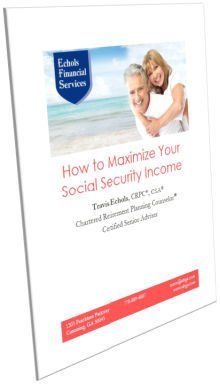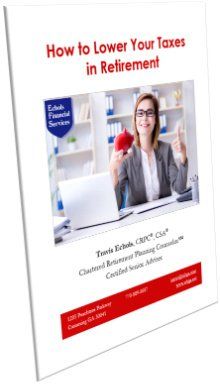Are Annuities a Good Investment - The Good, Bad, and Ugly

Are annuities a good investment strategy? What is the downside of annuities?
You hear lots of talk about annuities in the financial media. Some of that talk is pro-annuity; some of it is anti-annuity. Who is right?
One way to know if an annuity may be good for you is to understand the pros and cons of the different types of annuities, and with that knowledge, apply it to your own situation. But that is a lot of work that few investors want to tackle.
Or you can consult a financial fiduciary who not only understands annuities, but other investment approaches as well, and who will take the time to help you find the best solution to achieve your financial goals.
An annuity may indeed be a part of the best solution for you. But don’t buy an annuity without understanding it thoroughly and without understanding other options which could be better for you. As you know, the enemy of the best is so often not the bad, but the good that deprives you of the best.
Sign up to receive my free monthly email articles on retirement planning .
There are many types and variations of annuities. Some can be complex. In this article, I will explain the basics of annuities and their major characteristics. I’ll then finish with an overview of the good, the bad, and the ugly aspects of annuities.
What is an Annuity?
Many people want to know is an annuity a good investment for them? In the most basic sense, an annuity is a sum of money paid annually or at other regular intervals. In this vein, defined pension payments and Social Security monthly payments are annuities.
In the more specific insurance sense, an annuity contract is a contract between you and an insurance company or investment company, whereby you invest your money in exchange for certain guarantees related to growth, disbursements, or other benefits to you--either starting immediately or at some point in the future.
(Note: I am writing about the main types of annuities and those that are available to most investors. I will not cover longevity annuities or Tax Sheltered Annuities (TSAs) for employees of public schools and certain tax-exempt organizations (otherwise known as Section 403(b)).
How Do I Evaluate an Annuity?
Many
things must be evaluated together to figure out which, if any, annuity
product is best for your situation. Your liquidity
needs, risk tolerance, growth needs, time horizon, income needs, tax
burden, and inheritance goals all must be compared to the various
features of the annuity under consideration.
To properly evaluate annuities here are at least six characteristics you want to understand.
- Income Phase (immediate or deferred)
- Accumulation Method (fixed or variable)
- Liquidity (surrender period or no surrender period)
- Tax Efficiency (inside a tax-favored retirement plan or not)
- Risk (higher returns or guarantees)
- Income (predictable or variable)
Let’s look at these in more detail.
Income Phase (immediate or deferred) . When you invest in an annuity, you can choose to start receiving an annuitized payment immediately or defer withdrawals until a later time. Also, deferred annuities can be annuitized later, and thus start behaving like an immediate annuity. Immediate or annuitized deferred annuities convert your lump-sum premium into a series of payments for your entire lifetime or for a certain period. “Fixed amount” and “income only” are other payout options. Researchers have shown that using an immediate annuity with a portion of retirement assets can help retirees from running out of money. However, few people use this type of annuity because of two reasons:
- Life payouts require the investor to give up their principal. If you invest $100,000 into a Single Premium Immediate Annuity (SPIA) and die six months later, you only received six months of that lifetime annuity and the vast portion of your investment is forfeited to the insurance company who profits from your early death but also uses that money to pay for annuitants who live much longer than normal. If you do not care about leaving an inheritance, perhaps you would be willing to take that risk to guarantee that the payments will never stop coming no matter how long you live. You can choose a “life income with refund” or “life income with guaranteed period certain” but these options significantly lower your monthly income if you live long. Also, this inability to tap into the $100,000 for emergencies is forfeited in a SPIA.
- Interest rates are very low. When you purchase a SPIA or annuitize a deferred annuity, you are annuitizing at the current interest rate level. The resulting lower payments from your annuity will not rise later due to rising rates. You have locked in a rate of return for life.
With
Social Security and/or company pensions being guaranteed for life, most
retirees do not want to give up
access to their nest-egg in exchange for anotherguaranteed income stream. They
choose other investment strategies with more liquidity and/or growth
potential to manage longevity
risk.
Figure 1. Basic Annuity Types
Accumulation Method (fixed or variable) . Both immediate and deferred annuities can be either fixed or variable. A fixed annuity guarantees your principal and can provide a fixed-dollar periodic payment to you. Variable annuities allow you to receive bigger future payments if the investments of the annuity perform well and smaller payments if its investments perform poorly.
Fixed annuities tend to provide a more stable cash flow, but variable annuities have the potential of providing ahigher stream of income. Fixed annuity rates of return can be a little higher than certificates of deposit (CDs) of the same maturity duration, but not necessarily.
Variable annuity investments (called subaccounts) are like mutual funds in their performance, except high fees can dampen the returns. The value of a fixed annuity will never go below your initial premium, except for withdrawals and early surrender charges you incur.
The value of variable annuities can go below your initial investment amount due to the variable investments within the annuity, but it may guarantee the original premium investment (minus any withdrawals or early surrender charges) for your heirs at your death.
Equity indexed annuities (EIAs) are legally a type of fixed annuity that provides principal protection but links the return to stock market indexes, like the S&P 500. This makes the return less predictable but keeps the principal guarantee in place. However, the upside participation in the index returns is always muted due to participation rates, caps, margins, or other limiting mechanisms.
There is no such thing as getting most or all of the upside of the market without the downside risk. Fixed equity index annuities, therefore, provide less stable returns than their fixed-income counterparts but have the potential of performing better during a period of strong stock market performance. See Fidelity Viewpoints illustration below.
Under certain circumstances fixed income annuities or EIAs could be used as a bond substitute in a diversified portfolio. But EIAs’ growth potential does not qualify as a stock substitute in a diversified growth portfolio.
Remember that insurance companies face the same interest rate and market realities as any other investor. They have to buy bonds and equity index call options for their EIA products to work and be profitable. If you wanted to, you could construct your own portfolio of partial upside stock market participation with a downside principal guarantee by buying bonds and using the interest to buy at-the-money call options.
Liquidity (surrender period or no surrender period) . If you buy an annuity from an insurance agent who receives a commission from the sale, you have committed to keep your money in that investment over a period of time or incur a surrender charge. Surrender periods can last several years, varying from product to product. The surrender penalty starts out at the highest percent and gradually declines over the surrender period. The longer the surrender period, the higher the initial surrender charge will be.
Due to the commission paid by the insurance company to the agent and any bonuses that may have been paid to the annuitant, this surrender penalty (and/or bonus vesting) protects the insurance company from loss if you decide to take all your money out of the annuity before the period has expired.
Early surrender values may also be affected by a market value adjustment, which can be positive or negative based on interest rate movements. Usually, a penalty-free amount of 10% is allowed to be withdrawn each contract year.
No-load annuities have fees or interest rate spreads but usually have no surrender charges. No-load annuities are therefore more liquid than commission-based annuities sold by an agent.
You do have a "Free Look" provision that allows you at least 10 days to change your mind even after you have signed the contract with the insurance company and received all policy documents. Some companies may give a free look for up to 30 days.
Tax Efficiency (inside a tax-favored retirement plan or not) . The taxes associated with annuities deserve very close attention. Annuities owned inside of tax-favored retirement plans like 401(k)s and IRAs are taxed per retirement plan rules. For example, all distributions from a tax-deductible IRA are taxed as ordinary income in the year of the distributions. On the other hand, contributions to a non-qualified annuity are not tax-deductible, but the growth is tax-deferred.
From a tax perspective, payments you receive from an annuitized contract are prorated based on interest and principal. A part of each payment to you is considered taxable earnings and part is treated as principal (basis). Distributions from a deferred annuity (which is not annuitized) are taxed interest first, then principal (last-in, first-out).
For an annuity that has gained in interest over the years, this can make the tax burden onerous until all the interest is tapped. Also, if you make early withdrawals from a deferred annuity before age 59½, taxes on growth and a 10% penalty apply, similar to qualified plans and IRAs, with certain exceptions.
Even non-qualified deferred annuities (annuities funded with after-tax monies outside of a company qualified plan or individual retirement account) that have accrued lots of interest (i.e., that have a relatively low basis) can be very tax- inefficient.
As for transferring, qualified annuities can be rolled over or transferred to a brokerage IRA or to another insurance company. To prevent a tax consequence on a non-qualified annuity, a 1035 exchange can be used to transfer the funds to anotherinsurance product with another insurance company. The cost basis/earnings data is transferred to the receiving annuity company for proper record keeping. Of course, with any transfer, the funds transferred are subject to the surrender fees or adjustments of the financial product from which it is being transferred.
Deferring taxes on the earnings in your annuity is beneficial, but the taxes will eventually have to be paid by you, your spouse, or your non-spouse heirs. And that tax is at ordinary income rates. Lower capital gains rates do not apply, nor is there a step-up in cost basis at death, like with stock and bond investments in taxable brokerage accounts.
At the death of the annuitant, earnings in annuities are treated as income with respect to the decedent (IRD). IRD assets differ from capital assets. At death, the cost basis of a capital asset is stepped up to fair market value, so the heirs do not have to pay any income tax on the gain which accrued during the owner’s life. IRD assets, though, do not get a cost basis step-up. The income tax obligation remains intact and passes on to the beneficiaries.
Because tax-deferral is already a feature of qualified retirement plans and IRAs, the only reason to own an annuity in one of these plans is for the annuity’s guarantees, riders, and/or investment features--not for tax-deferral.
Risk (higher returns or guarantees) . Annuities are issued by insurance agencies who make guarantees in exchange for charging fees or keeping a portion of the interest they earn on your investment. Fixed annuities come with a guarantee of your original premium. There may be optional guarantees regarding the death benefit or withdrawals. These are often benefits that are attractive, but these guarantees come at a cost. Variable annuity fees are often charged separately and can include
- Mortality and Expense Risk
- Administrative Fees
- Optional Guaranteed Minimum Death Benefit Rider
- Optional Guaranteed Lifetime Withdrawal Benefit Rider
- Fund Expense for Underlying Funds in Variable Annuity
These fees can add up to 2 to 3% or more, which can be a significant drag on returns.
Fixed annuity costs to annuitants are not so transparent but are nonetheless there. While it may be said that fixed-annuities andfixed index annuitieshave no fees, it shouldn’t be understood that these products do not have interest rate spreads that lower the interest paid to the annuitant. If you invested your money in the same bonds and other investments the insurance company did, you could receive a higher interest.
The spread that the insurance company keeps is the price you are paying for the guarantees and services provided by the insurance company. Other riders on the policies add to the cost of the annuity in fees and/or a lower interest payout.
Some
annuities are better than others, but here is an example of a 10-year
equity-indexed annuity’s performance from December 2005 to December
2015. Fidelity Viewpoints –
07/13/2016 Indexed annuities: Look before you leap.
And guaranteed, fixed-dollar annuities (unless they have an inflation adjustment) are subject to inflation risk. See Why Simple Savers Lose in the End . A special first-year bonus (a much higher interest rate) is often offered to sweeten the pot. But always remember that insurance companies are in business to make a profit and the upfront bonus they pay you now will reduce your payments in subsequent years and/or stretch out the surrender period.
Below
is a snapshot of fixed rates as of the end of March 2017. Fixed annuity
rates for a number of products
are averaged on the bottom line. Notice how on average, fixed annuity
rates may be slightly higher than government agency bonds, CDs, U.S.
Treasuries, but lower than investment-grade corporate bonds
rated A and BBB. (Caveat: You may find rates outside these norms, but as
of the time of this writing these were averages
based on a random sample of products within the
category.)
Figure 2. Fixed Rates Comparison as of March 31, 2017
Income (predictable or variable) . Another factor that is important in retirement is income stability. Retirees need to be careful about withdrawal rates, lest they run out of money in retirement. Deferred fixed-rate annuity returns are often low, but they are predictable.
Equity index annuity growth has the potential of being higher than fixed-rate payments, but are unpredictable from year to year. Not only does the stock index return vary each year, but for many EIAs, the insurance company gets to change the margin each year, which controls the portion of the index gain you receive.
Guaranteed living benefit riders on variable and equity-indexed annuities can promise an attractive withdrawal rate without annuitizing. But as CFP Michael Kitces points out in his article, Do Today’s Guaranteed Living Benefit Annuity Riders Really Offer Enough To Be Worthwhile?, "While following a 4% safe withdrawal rate approach may seem unappealing when an annuity income guarantee might offer 5%, it’s crucial to remember that safe withdrawal rates assume inflation-adjusted spending, while living benefit riders generally only provide level cash flows that may be eroded by inflation over time....In today’s environment, as insurance companies require investors to hold a portion of assets inside the annuity in less productive investments, and at a higher cost, and in a lower return environment, the trade-off is simply not what it once was. Suddenly, saving the cost and just investing and spending conservatively appears to be a remarkably appealing alternative."

Annuities Good or Bad Summary Below
Are Annuities Good?
For very risk-averse investors, annuities can provide guarantees that provide some peace of mind. Annuitizing a piece of your portfolio can provide added longevity insurance if needed. If leaving a bigger inheritance or maximizing current payments is not important to you, but outliving your money is, having a guaranteed-for-life annuity may be your best option.
A fixed-rate (or fixed index annuity) deferred annuity provides a guarantee of principal and may earn more than other guaranteed options.
Variable annuities can provide guarantees that allow risk-averse investors access to the growth in the stock market in which they might otherwise not have had the courage to invest. And there are no-commission, low-cost variable annuities seniors and retirees can consider.
After-tax money deposited into
non-retirement-plan annuities can grow tax deferred--with no required minimum
distributions at age 72 (age70½ before the SECURE Act of 2019). This allows the income taxes on the interest to be
deferred to a later time when your tax rate may be lower or paid after your
death by your heirs. For those who have maxed out their retirement plans (or
don’t qualify for one) and need tax deferral, annuities are an option to
consider.
You could also use fixed-dollar or
equity-indexed annuities instead of bonds in your diversified portfolio, but
rebalancing may be more difficult and/or costly due to the annuity’s
illiquidity and less flexible investment change rules. Full dynamic
rebalancing, which can increase your safe withdrawal rate, may prove to be
impractical if you have too much of your "bond allocation" in an
annuity instead. Tax pros and cons would also have to be considered. See Three Steps to Safely Maximize Your Portfolio Income
.
Academic retirement researchers like Dr. Wade Pfau show how annuities can be used strategically in a comprehensive retirement plan to help protect you from longevity risk and sequence-of-returns risk. See my article, "What is Safety-First Retirement Planning?".
Why are Annuities Bad?
Are annuities good or bad is a common question many people have. Annuity guarantees are costly. Their inherent costs, along with high surrender charges, can lock an investor into low returning performance for many years. This in turn will also guarantee a lower portfolio withdrawal rate in retirement than other methods are likely to achieve, when all factors, including inflation, are considered.
High surrender charges create inflexibility and illiquidity that can also be a problem if unexpected needs arise. In the case of premature death, immediate or annuitized life annuities may leave nothing to family, charity, or anyone else the decedent might desire to designate.
Annuities should always be compared
to other
available financial products. For example, a diversified portfolio of stocks and bonds,
if managed with proper safeguards, is not guaranteed, but based on historical
back-testing over various scenarios, is more likely to provide a substantially
higher inflation-adjusted lifetime income and/or a greater inheritance to heirs
(See Kitces reports: Annuities Versus Safe Withdrawal Rates: Comparing
Income Floor-With-Upside Approaches
and How Do You Measure Which
Retirement Income Strategy Is Best?
).
Without the lower capital gains and lower
qualified dividend tax rates, non-retirement-plan deferred annuities,
especially with their required interest-out-first tax rules, can be a tax time
bomb in retirement when income is needed. See How to Dodge the Social
Security Tax Torpedo
. And with no step-up in cost basis, annuities can
leave heirs with a big tax bill due to tax rules involving income with
respect to the decedent
.
The Ugly
The ugly about annuities is the overselling of them to people who don’t need them. You know the old saying, “When all you have is a hammer, everything looks like a nail.”
You just want to be careful of insurance agentsmasquerading as financial advisors who are really trying to sell you an annuity. They may emphasize or embellish the positives, and be less motivated to tell you about the negatives. High commissions create a conflict of interest for insurance agents in the annuity sales business.
Or they simply may not understand other investment products that may serve you better than an annuity.
But then again, this critique can apply to any advice where the client's needs serve a particular strategy rather than the best strategy serving the client's needs.
Due diligence is required to know the needs of clients and the pros and cons of various investment approaches. With this due diligence and a fiduciary approach, the puzzle can be solved in a way that pushes aside the bad and the ugly (and even the good) for the best.


Travis Echols , CRPC®, CSA
Receive free Social Security Guide by email




Investment Advisory Services offered through JT Stratford, LLC. JT Stratford, LLC and Echols Financial Services, LLC are separate entities.











